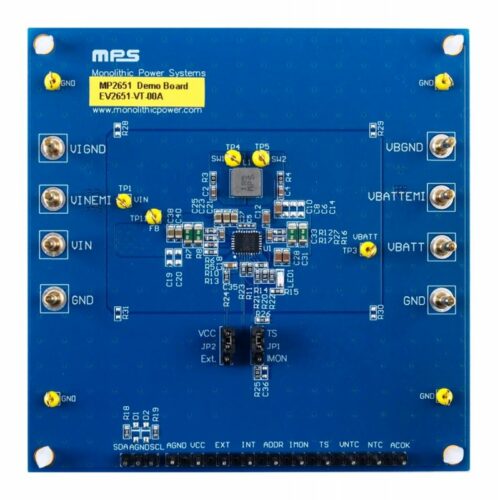Monolithic Power Systems (MPS) has introduced I2C-Controlled, 1-Cell to 4-Cell Buck-Boost Charger with Reverse Source Mode Evaluation Board.

A buck converter is a DC-to-DC power converter which steps down voltage from its input to its output. It can be used to charge a battery as it steps down the voltage. But not all converters offer a discharging feature as well. Most of the buck converters are designed for charging and can not be used to alter the process.
Monolithic Power Systems (MPS) EV2651-VT-00A Evaluation Board demonstrates the MP2651 buck-boost charger IC designed for battery packs with one cell to four cells in series. The device can accept an input voltage (VIN) range of 4V to 22V to charge the battery. It also supplies a wide 3V to 21V voltage range at the IN pin in source mode. This function is compliant with USB PD specifications.
When input power is present, the board charges the battery with a maximum 6A charge current. When source mode is enabled, the device has an output current (IOUT) limit up to 6A. With the I2C/SMBus interface, the MP2651 can flexibly configure the charge and discharge parameters. The I2C interface can also provide the device and fault statuses through the registers.
Features
- 4V to 22V Input Voltage (VIN) Range
- Up to 6A Charge Current when Input Power Is Present
- Up to 93.09% Charge Typical Efficiency
- Up to 600kHz Switching Frequency (fSW)
DC-DC buck converters are used for battery chargers in many applications including renewable energy sources, inverters, electric vehicles and robots.






